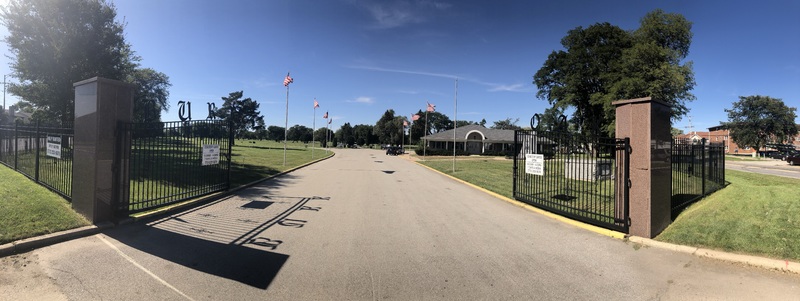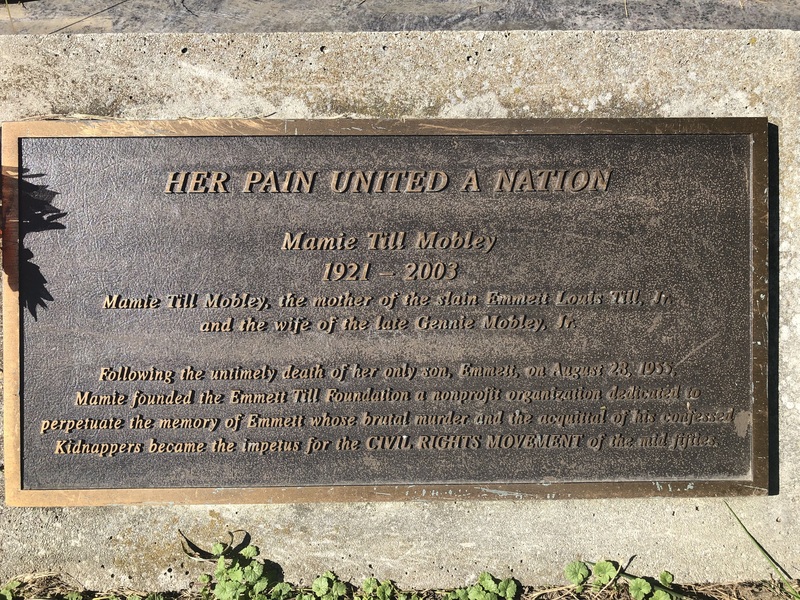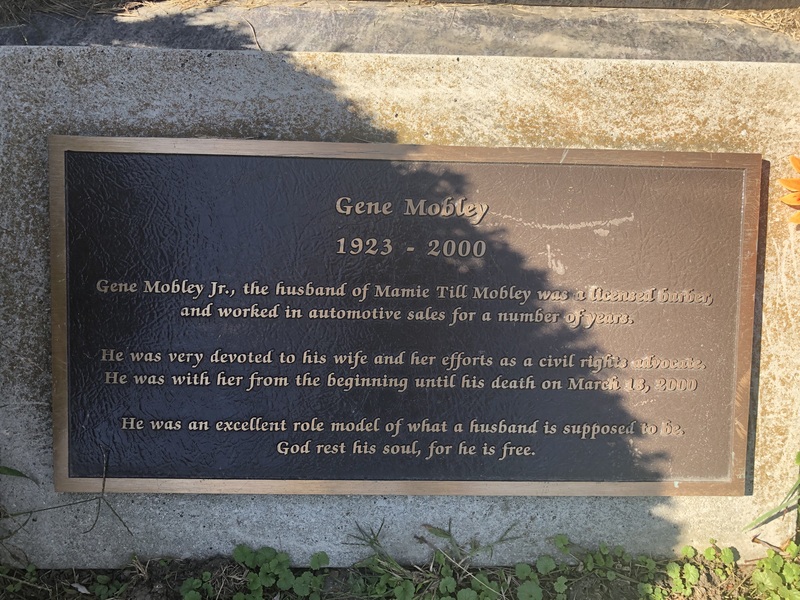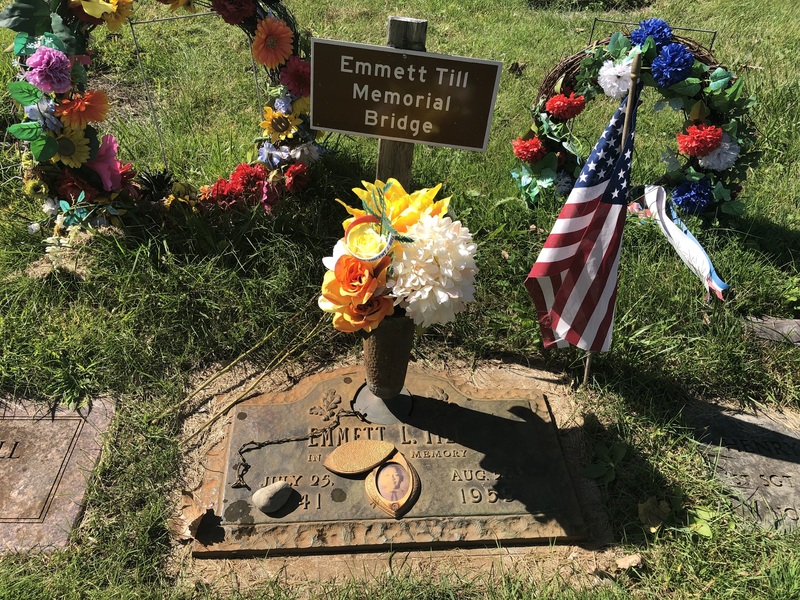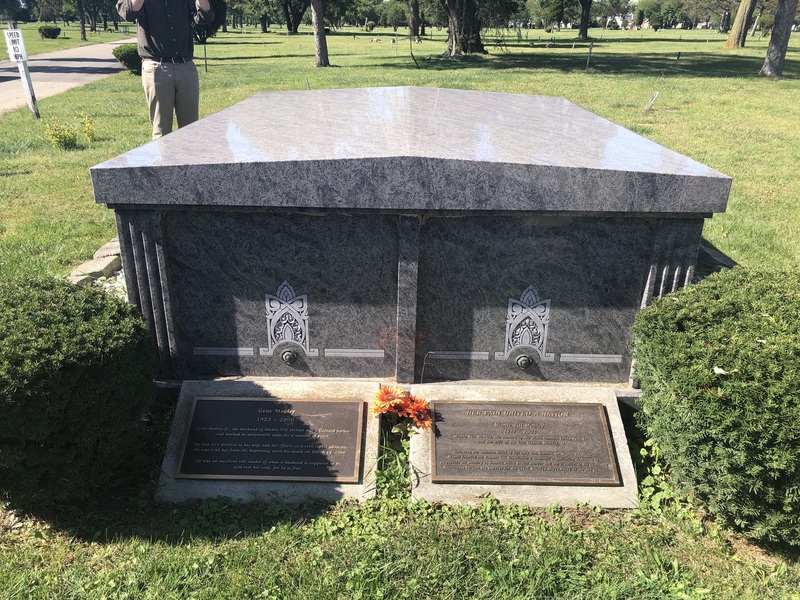Burr Oak Cemetery
Till's final resting spot has never been without drama
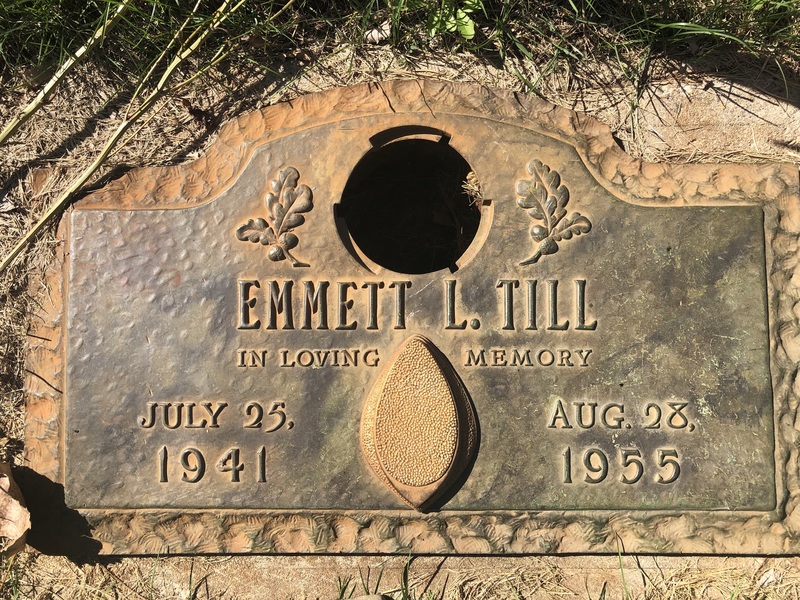
Emmett Till’s funeral began shortly after his body came home to Chicago. The A. A. Rayner Funeral home opened its doors for the initial viewing on Friday, September 2. On Sunday, Till's body was moved to the Robert’s Temple of the Church of God in Christ for a deeply emotional service. The church remained open for two days as a steady stream of people came to pay their last respects—one hundred thousand of them, according to the police estimate. After final prayers on Tuesday morning, fifty cars followed Emmett’s hearse to the burial ground at Burr Oak Cemetery.
In midcentury Chicago, death was just as segregated as life. Burr Oak Cemetery was founded in 1927 in Alsip, Illinois, a suburb of Chicago, financed by prominent south-side businessmen as a final resting place for African-Americans. Famous contemporaries of Emmett Till were buried there including heavyweight boxing champion Ezzard Charles, songwriter/producer Willie Dixon, gospel singer Roberta Martin, and Dinah Washington, “the queen of the blues.”
It was warm even for early September when Emmett Till’s body was laid to rest in Burr Oak. Two hundred people gathered at the gravesite for one last round of tears and prayer and remembrance. His ground level marker read simply, “Emmett Till, In Loving Memory” along with the dates of his birth and death, and a tiny photo of him from Christmas, 1954. As the decades passed, Mamie Till-Mobley was increasingly dissatisfied with the conditions and upkeep of the grounds. Till's gravesite was often flooded, the headstone was broken by mowers, the picture was in tatters, and the vase designed to hold flowers would no longer stand upright. She longed to move the body to the beautiful Oak Woods Cemetery and established a fundraising campaign to make it happen.
In 2001, however, Burr Oak Cemetery came under new management. Under the direction of Carolyn Towns, the cemetery satisfied Till-Mobley with a promise to build a museum called the “Emmett Till Historical Museum.” The museum would honor the legacy of Emmett and provide a final resting spot for him, Till-Mobley, and her long-time husband Gene Mobley. It never came to pass.
In May 2004, nearly fifty years after his burial, the FBI reopened the Till case. The Cook County Medical Examiner set up a tent at Burr Oak Cemetery and exhumed Till’s body. The forensic exam determined that the body in Burr Oak Cemetery was in fact the body of Emmett Till. While this may seem obvious, it is important to remember that there was a dispute over the identity of the body that, in 1955, provided the jury the legal cover with which to acquit the murderers. Although Sheriff H. C. Strider indicated that Till was “colored” on the death certificate, he testified in trial that the body was so decomposed that he could not identify its race. This was willed ignorance, designed to provide a legal mechanism to let the murderers walk free. With this background, the 2005 exhumation takes on new importance. The forensic exam marked the end of Strider’s racist lie.
Three days after the FBI exhumed the body, they set the body in a new coffin and, in a private ceremony, reinterred the body. Because the long-promised Emmett Till Historical Museum had not yet come to pass, the family understood the reburial as a temporary measure. When the museum was complete, they believed Till’s body would be moved once more.
In July 2009, Carolyn Towns was charged with dismembering remains, reselling occupied plots, and stealing over $100,000 from the cemetery. She pled guilty to a range of charges in 2011 and began a twelve-year prison sentence in November of that year.
Although Till’s plot was not harmed by Town’s scheme, she had not cared for Till’s casket. Following the exhumation, the original casket sat in a neglected storage shed and was occupied by a family of possums. When it was discovered in 2009, the Till family took possession of the casket, had it restored at A. A. Rayner and Sons funeral home, and made plans to give it to Smithsonian’s National Museum of African American History and Culture.
Beautifully refurbished, that original coffin where Emmett’s body lay while one-hundred-thousand mourners passed by, where the famous photograph of his brutalized face was taken, where he rested for fifty years, now forms the centerpiece of the most moving display in the National Museum of African American History and Culture in Washington, D. C. With the coffin front and center, the visitor enters a room designed to look like the Roberts Temple did in September 1955.
While the original coffin has moved to Washington, D. C., Till remains in Burr Oak Cemetery, where he was first buried in 1955. The headstone is small and relatively unadorned, the museum remains unbuilt, but the gravesite is peaceful and open to public viewing.
Video
Images

